�
This page intentionally left blank
THEARTOFMOLECULARDYNAMICSSIMULATIONTheextremelypowerfultechniqueofmoleculardynamicssimulationinvolvessolv-ingtheclassicalmany-bodyproblemincontextsrelevanttothestudyofmatterattheatomisticlevel.Sincethereisnoalternativeapproachcapableofhandlingthisbroadrangeofproblemsattherequiredlevelofdetail,moleculardynamicsmeth-odshaveprovedthemselvesindispensableinbothpureandappliedresearch.Thisbookisablendoftutorialandrecipecollection,providingbothanintroductiontothesubjectforbeginnersandareferencemanualformoreexperiencedpractition-ers.Itisorganizedasaseriesofcasestudiesthattakethereaderthrougheachofthestepsfromformulatingtheproblem,developingthenecessarysoftware,andthenusingtheprogramstomakeactualmeasurements.Thissecondeditionhasbeenextensivelyrevisedandenlarged.Itcontainsasub-stantialamountofnewmaterialandthesoftwareusedinthecasestudieshasbeencompletelyrewritten.DennisRapaportreceivedhisB.Sc.andM.Sc.degreesinphysicsfromtheUni-versityofMelbourne,andhisPh.D.intheoreticalphysicsfromKing’sCollege,UniversityofLondon.HeisaProfessorofPhysicsatBar-IlanUniversityandiscurrentlydepartmentalchairman.HehasheldvisitingappointmentsatCornellUni-versityandIBMinNewYork,isanAdjunctProfessorattheUniversityofGeorgiaandaFellowoftheAmericanPhysicalSociety.Hisinterestincomputermodelingemergedduringhisundergraduateyearsandhispresentresearchinterestsincludeboththemethodologyofmoleculardynamicssimulationanditsapplicationtoavarietyoffields.�
�
THEARTOFMOLECULARDYNAMICSSIMULATIONSecondEditionD.C.RAPAPORT�
cambridge university pressCambridge, New York, Melbourne, Madrid, Cape Town, Singapore, São PauloCambridge University PressThe Edinburgh Building, Cambridge cb2 2ru, UKFirst published in print format isbn-13 978-0-521-82568-9isbn-13 978-0-511-19448-1© Cambridge University Press 1995, Dennis Rapaport 20042004Information on this title: www.cambridge.org/9780521825689This publication is in copyright. Subject to statutory exception and to the provision ofrelevant collective licensing agreements, no reproduction of any part may take placewithout the written permission of Cambridge University Press.isbn-10 0-511-19448-xisbn-10 0-521-82568-7Cambridge University Press has no responsibility for the persistence or accuracy of urlsfor external or third-party internet websites referred to in this publication, and does notguarantee that any content on such websites is, or will remain, accurate or appropriate.Published in the United States of America by Cambridge University Press, New Yorkwww.cambridge.orghardbackeBook (EBL)eBook (EBL)hardback�
ContentsPrefacetothefirsteditionpageixPrefacetothesecondeditionxiiAboutthesoftwarexiii1Introduction11.1Historicalbackground11.2Computersimulation21.3Moleculardynamics41.4Organization81.5Furtherreading102Basicmoleculardynamics112.1Introduction112.2Soft-diskfluid112.3Methodology182.4Programming202.5Results342.6Furtherstudy433Simulatingsimplesystems443.1Introduction443.2Equationsofmotion443.3Potentialfunctions463.4Interactioncomputations493.5Integrationmethods603.6Initialstate673.7Performancemeasurements743.8Trajectorysensitivity773.9Furtherstudy82v�
viContents4Equilibriumpropertiesofsimplefluids834.1Introduction834.2Thermodynamicmeasurements844.3Structure904.4Packingstudies964.5Clusteranalysis1124.6Furtherstudy1185Dynamicalpropertiesofsimplefluids1205.1Introduction1205.2Transportcoefficients1205.3Measuringtransportcoefficients1245.4Space–timecorrelationfunctions1345.5Measurements1455.6Furtherstudy1526Alternativeensembles1536.1Introduction1536.2Feedbackmethods1546.3Constraintmethods1656.4Furtherstudy1747Nonequilibriumdynamics1767.1Introduction1767.2Homogeneousandinhomogeneoussystems1767.3Directmeasurement1777.4Modifieddynamics1887.5Furtherstudy1988Rigidmolecules1998.1Introduction1998.2Dynamics2008.3Molecularconstruction2168.4Measurements2228.5Rotationmatrixrepresentation2328.6Furtherstudy2439Flexiblemolecules2459.1Introduction2459.2Descriptionofmolecule2459.3Implementationdetails2479.4Properties2519.5Modelingstructureformation256�
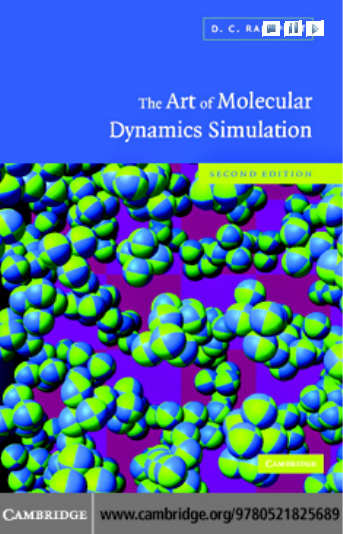

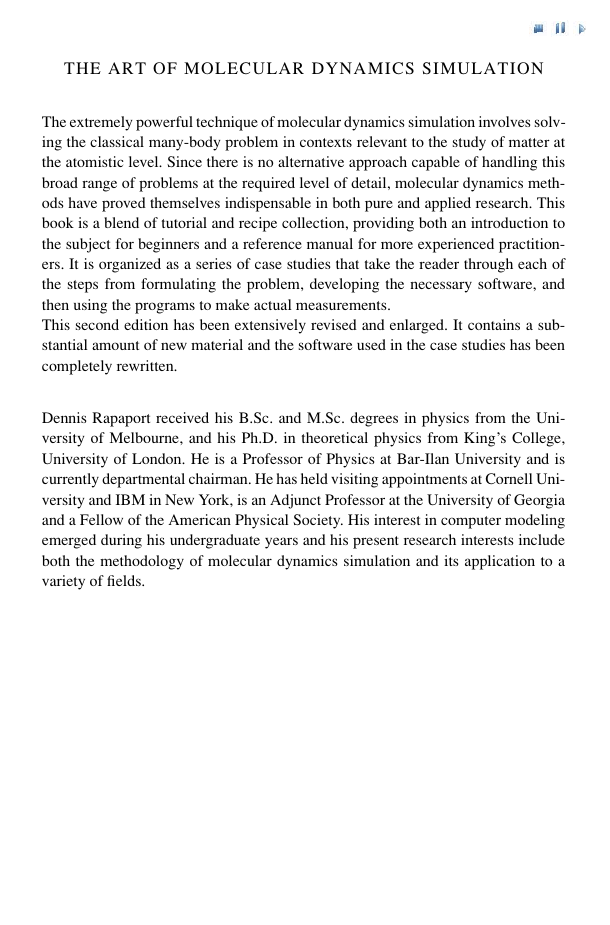

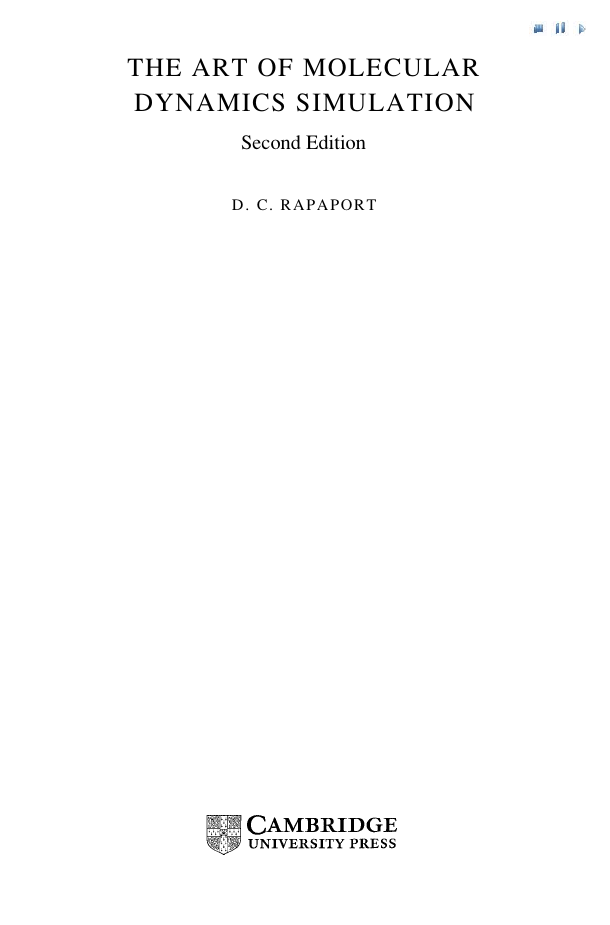
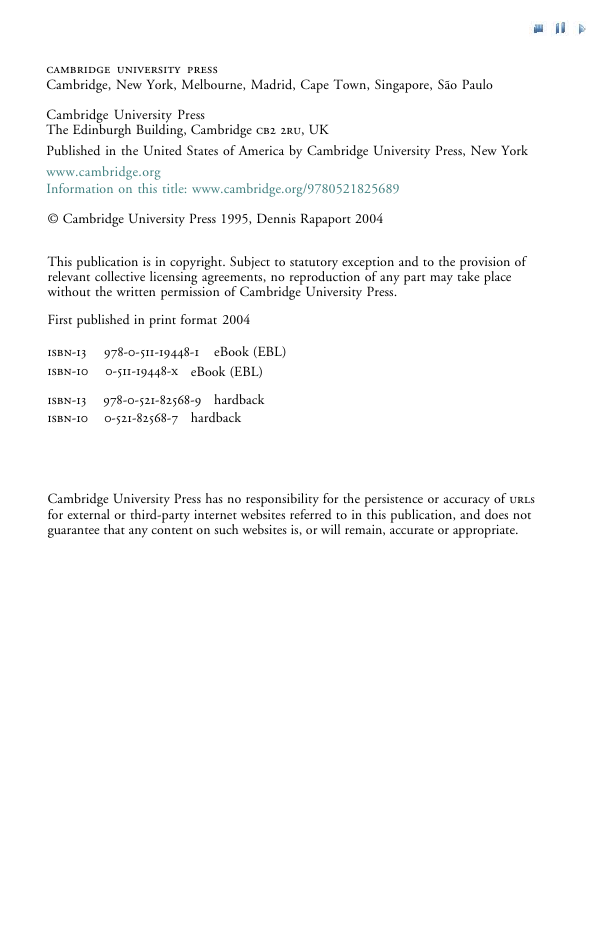
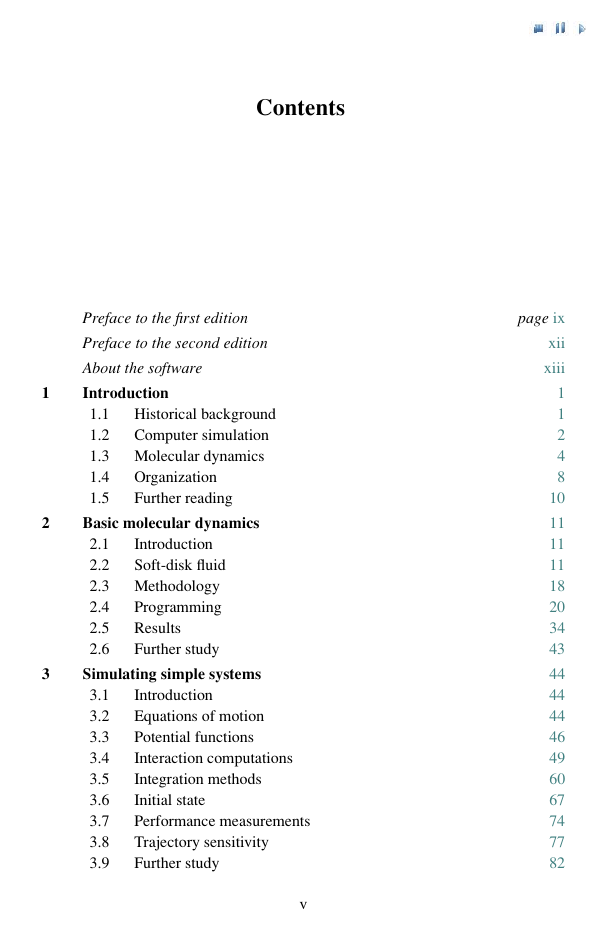
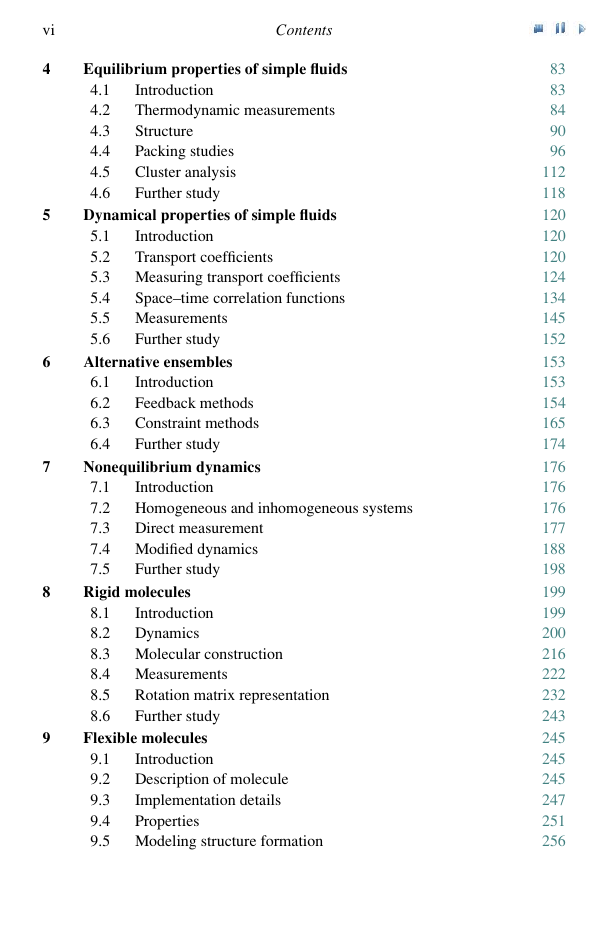








 2023年江西萍乡中考道德与法治真题及答案.doc
2023年江西萍乡中考道德与法治真题及答案.doc 2012年重庆南川中考生物真题及答案.doc
2012年重庆南川中考生物真题及答案.doc 2013年江西师范大学地理学综合及文艺理论基础考研真题.doc
2013年江西师范大学地理学综合及文艺理论基础考研真题.doc 2020年四川甘孜小升初语文真题及答案I卷.doc
2020年四川甘孜小升初语文真题及答案I卷.doc 2020年注册岩土工程师专业基础考试真题及答案.doc
2020年注册岩土工程师专业基础考试真题及答案.doc 2023-2024学年福建省厦门市九年级上学期数学月考试题及答案.doc
2023-2024学年福建省厦门市九年级上学期数学月考试题及答案.doc 2021-2022学年辽宁省沈阳市大东区九年级上学期语文期末试题及答案.doc
2021-2022学年辽宁省沈阳市大东区九年级上学期语文期末试题及答案.doc 2022-2023学年北京东城区初三第一学期物理期末试卷及答案.doc
2022-2023学年北京东城区初三第一学期物理期末试卷及答案.doc 2018上半年江西教师资格初中地理学科知识与教学能力真题及答案.doc
2018上半年江西教师资格初中地理学科知识与教学能力真题及答案.doc 2012年河北国家公务员申论考试真题及答案-省级.doc
2012年河北国家公务员申论考试真题及答案-省级.doc 2020-2021学年江苏省扬州市江都区邵樊片九年级上学期数学第一次质量检测试题及答案.doc
2020-2021学年江苏省扬州市江都区邵樊片九年级上学期数学第一次质量检测试题及答案.doc 2022下半年黑龙江教师资格证中学综合素质真题及答案.doc
2022下半年黑龙江教师资格证中学综合素质真题及答案.doc